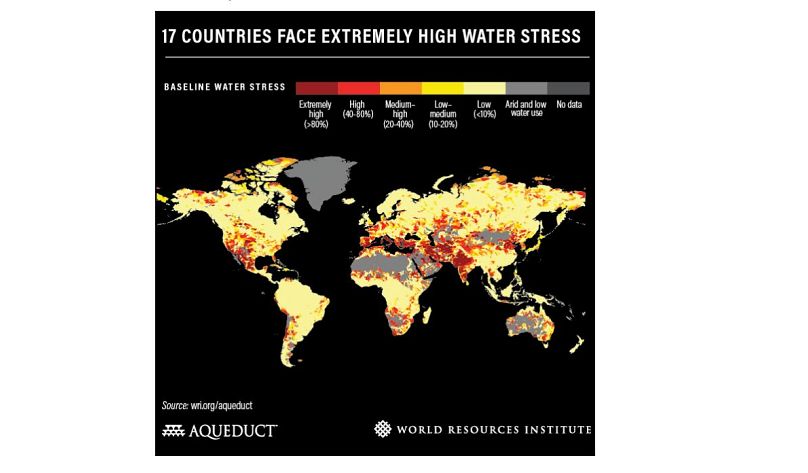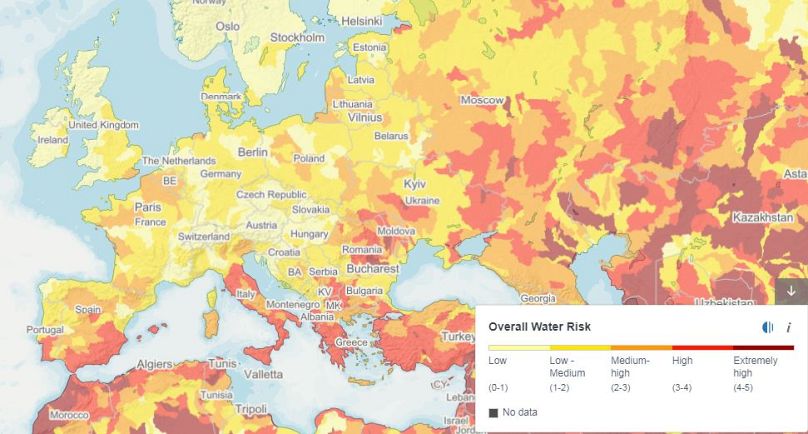Most of southern Europe falls into the 'high water stress' category, with some cities and region facing an even deeper crisis.
One-quarter of the world's population is facing "extremely high water stress", a newly published ranking has revealed.
Data published by the World Resources Institute (WRI) shows 17 countries — including San Marino — fall into this category.
“Water stress is the biggest crisis no one is talking about," said Dr Andrew Steer, president and CEO of WRI.
"Its consequences are in plain sight in the form of food insecurity, conflict and migration, and financial instability.”
Most of southern Europe falls into the 'high water stress' category, with some cities and region facing an even deeper crisis.
Qatar, Israel, India, Pakistan, or Iran are among the most water-stressed countries, according to the new data, drinking up an average of 80% of available water resources every year. Under these circumstances, "even small dry shocks – which are set to increase due to climate change – can produce dire consequences," the institute warned in a statement.
San Marino is the only country in Europe facing extremely high water stress, according to the new data.
Raoul Chiaruzzi, head of the San Marino State Agency for Public Services, told Euronews the microstate depended almost entirely on Italy for water supply. According to an agreement concluded between the two countries, Italy provides San Marino with more than 90% of its water supplies. The extremely high stress faced by San Marino is linked to its geographical position, its small size and absence of autonomous water resources, the civil servant said.
Meanwhile, Cyprus, Greece, Spain, Portugal, Italy — and even rainy Belgium — were ranked among the 44 highly water-stressed countries, meaning that on average more than 40% of available supply is withdrawn every year.
"Such a narrow gap between supply and demand leaves countries vulnerable to fluctuations like droughts or increased water withdrawals, which is why we’re seeing more and more communities facing their own “Day Zeros” and other crises," the Institute noted.
Among other examples, Rome was forced to cut water pressure at night for several days in 2017 amid a severe drought.
Pockets of extreme water stress exist even in countries where water resources are overall satisfactory, the Institute said.
“A new generation of solutions is emerging, but nowhere near fast enough. Failure to act will be massively expensive in human lives and livelihoods,” Steer warned.













